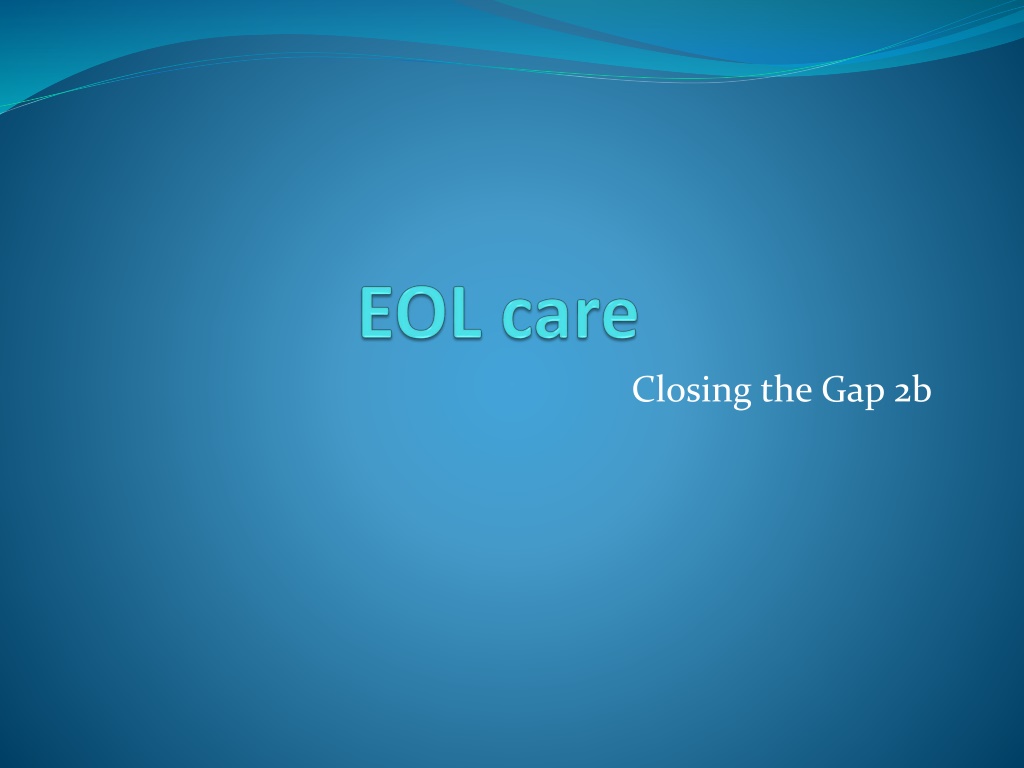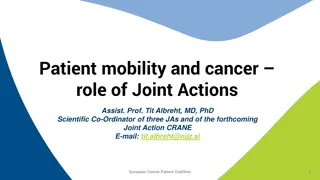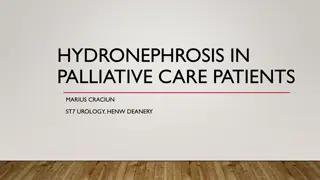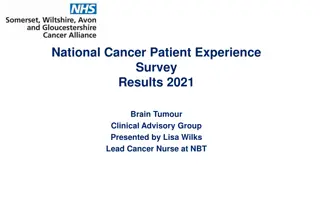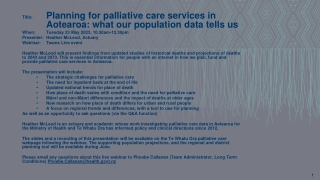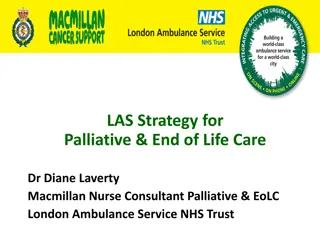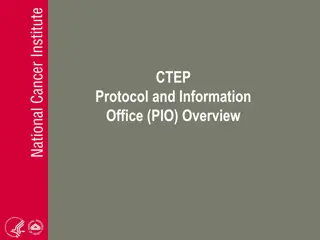Palliative Care Approach for Ovarian Cancer Patient: A Case Study
This case study follows the journey of Mrs. P, a 72-year-old woman diagnosed with malignant pleural effusion and suspected ovarian cancer. It explores the challenges of breaking bad news, addressing patient concerns, and providing palliative care measures. The narrative delves into communication strategies, symptom management, and end-of-life care decisions in a compassionate and holistic manner.
Download Presentation

Please find below an Image/Link to download the presentation.
The content on the website is provided AS IS for your information and personal use only. It may not be sold, licensed, or shared on other websites without obtaining consent from the author. Download presentation by click this link. If you encounter any issues during the download, it is possible that the publisher has removed the file from their server.
E N D
Presentation Transcript
LEARNING OUTCOMES Breaking bad news Clarifying what the patient knows Initiating appropriate palliative care measures: district nurse referral, Macmillan nurse referral, symptom control, Gold standards framework. Symptom control as disease progresses. How to approach difficult/sensitive issues; example here is DNAR form. Dealing with concerns and expectations of patients and family members. Example here: husband s concerns re weight loss, appetite.
Additional case scenario 72 year old lady admitted to hospital by your GP colleague 3 weeks ago, when she presented with acute shortness of breath, The GP notes from the time suggest a diagnosis of either pneumonia/pleural effusion. Today she requests a home visit, having been discharged from hospital 2 days before. The visit request says: left leg pain. The discharge letter from the hospital states: Malignant pleural effusion: treated with chest drain. CT abdomen and pelvis; suspicious ovarian mass, likely malignant. No obvious metastasis in abdomen or pelvis. Referred to gynaecology oncology as OP . It is not clear from the discharge letter, how much the patient was told, if anything, about the diagnosis/scan findings. How would you approach the findings on the hospital letter when you visit?
Part 2 When you visit, she tells you that the leg pain started in hospital. She had a scan to look for a blood clot, which was normal. Clinically there is no sign of a DVT when you examine the leg. After discussion, Mrs P knows that she has fluid on her lung and possible ovarian cancer. She is fairly pragmatic about the news and hopeful that the gynaecologist can offer treatment, as the cancer hasn t spread outside of the ovary. How would you respond to this?
Part 3 Some weeks later, you visit again. Mrs P was re-admitted to hospital with abdominal ascites, requiring drainage. She has been told that she cannot have any curative treatment for her condition. Mrs P s main symptoms are nausea. She is eating very little and her husband wants to know what can be done to improve her appetite and help with weight gain. As you are just about to leave for the visit, the district nurse stops you with the new multi-agency DNAR form, created by the local palliative care team. She asks if you can discuss this with Mrs P and complete the form during your visit.
